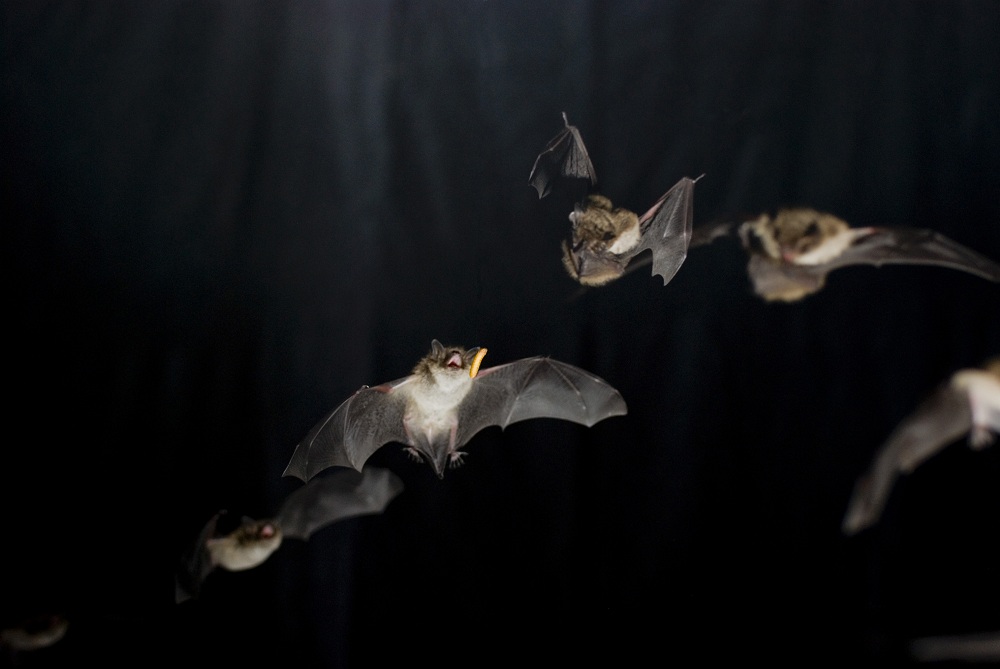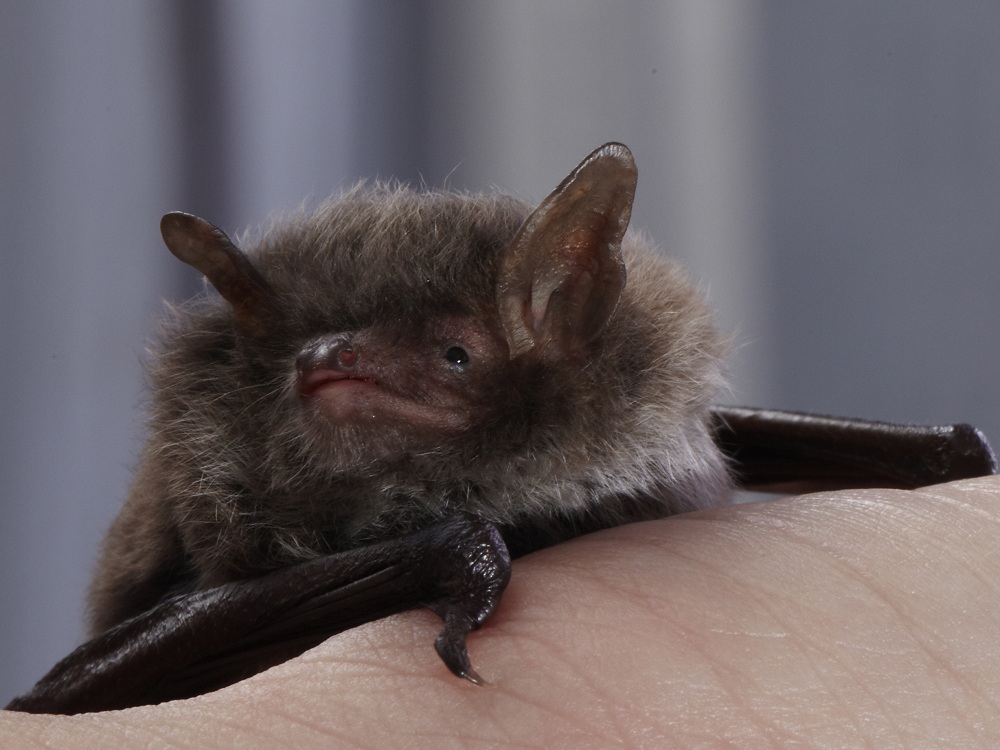Superfast Muscles Help Bats Make High-Pitched Buzz

The high-pitched calls produced by insect-feeding bats owe their origins to a set of superfast muscles in the bat's larynx, making this species the first mammal known to sport such superfast muscles, previously only seen in certain snakes and fishes.
"The buzz that is powered by these superfast muscles is very important in the evolution of bats," study researcher Coen Elemans, of the University of Southern Denmark, told LiveScience. "The two things that we think bats make very successful are flight and echolocation."
About 70 percent of living bats make calls, including a distinctive buzz, using their larynx. They use the calls to "see" the area around them and to track down and capture flying insects by listening to the echoes (a skill known as echolocation). Each call produces an image of the bats' surroundings, and putting together these images over time allows them to see movement. If possible, it would be beneficial for the bat to take "snapshots" of the area around them as quickly as possible, so the "video" is smoother.
Superfast calls

Bats make these calls, which are so high-pitched that humans can't even hear them, more than 190 times a second (every 6 milliseconds). The researchers were interested in figuring out what limited the bats' abilities to make these calls even faster: Were they unable to process the information? Would the calls and echoes overlap? Or were the bats not physically capable of making the calls quicker?
The researchers took Myotis daubentonii bats into an enclosure set up with supersensitive microphones. They tested how long it took for the echoes to return from the bat's prey, to see how frequently the bats could call before the sounds overlapped. The researchers found that the echoes reach the bats in about 1 millisecond; so for the calls to overlap, the bat would have to make at least 400 calls per second, so that's not what was holding them back.
Next, they tested the performance of the muscles that control the bat's vocal cords, finding that the muscles couldn't move any faster than 190 contractions per second, the rate needed to make about 190 calls per second. "They perform beautifully up to the call rate, but not beyond," Elemans said. "They were the limiting factor in how fast bats can produce calls."
Sign up for the Live Science daily newsletter now
Get the world’s most fascinating discoveries delivered straight to your inbox.
The muscles contract about 100 times faster than a human's leg muscles. They are the first set of superfast muscles discovered in mammals; others have been found to control the rattlesnake's rattle and the sound-producing quality of the toadfish's swim bladder (the fastest muscle in vertebrates). The superfast muscles seem to have evolved separately in these animals, though they could all be based off the same baseline tweaks to normal muscle forms, the researchers said.
Quick draw bats
Close up of about 0.2 mm of bat larynx muscle contracting 160 times per second. Two dark carbon beads are visible and used for automated tracking of the muscles’ movement. The light flashes occur every 0.3 milliseconds and are caused by the light source. This movie is slowed down 700 times. Credit: Coen Elemans
The superfast muscles have many special factors that make them able to contract with such speed. Their cells have extra energy-making organelles, called mitochondria, and extra calcium-shuttling proteins, which enable them to contract more frequently.
They probably also have a different kind of myosin, the protein that makes up the contracting parts of the muscle cells. Researchers are currently studying what about this myosin would enable these superfast muscles to contract with such a high frequency. Understanding how these high-performance muscles work could help us understand what goes wrong in diseases of normal muscles, Elemans told LiveScience.
It's also important to note that while these muscles are able to contract very quickly, they don't contract with much force. The bats use the muscles to create tension on their vocal cords. Quick movement is required here, but not strength.
The study was published in the Sept. 30 issue of the journal Science.
You can follow LiveScience staff writer Jennifer Welsh on Twitter @microbelover. Follow LiveScience for the latest in science news and discoveries on Twitter @livescience and on Facebook.
Aerial attack of Daubenton's bat (Myotis daubentonii) on a mealworm slowed down ten times. Just before the bat catches its prey, echolocation calls stop.
Jennifer Welsh is a Connecticut-based science writer and editor and a regular contributor to Live Science. She also has several years of bench work in cancer research and anti-viral drug discovery under her belt. She has previously written for Science News, VerywellHealth, The Scientist, Discover Magazine, WIRED Science, and Business Insider.










